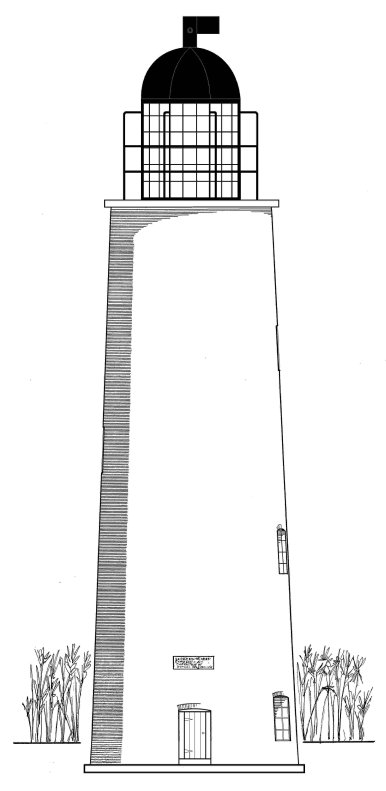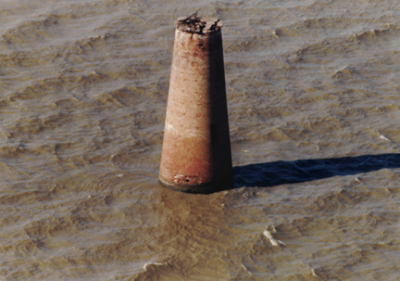According to Samuel Wilson, Jr.'s report for the Historic American Buildings Survey, jurisdiction of Frank's Island was ceded to the United States on March 2, 1818. It was then reported in the March 11, 1818 edition of the "Louisiana Courier" that the contract for building the lighthouse had been signed. By April 13, 1818 materials had started arriving by way of the Brig Triton from Boston.
The next dated reference I can find is from Dr. Fazio’s report. By July of 1818, Winslow Lewis had sent his agent, Benjamin Beal, to Frank’s Island. Joining him was Captain Edward Gardner, a customs inspector, who drove a test pile and determined there was “no doubt that a permanent building may be erected with perfect safety.” Dr. Fazio’s report then states that Beal went back to Boston to confer with Lewis. During the meeting, Beal conveyed his doubts that the island’s soil could support such a masonry structure. Despite Beal’s misgivings, construction on the lighthouse had begun by January of 1819.
In a report written by Benjamin Latrobe dated May 7, 1819, Latrobe describes a personal visit he made to Frank’s Island. In his report, Latrobe conveys his disappointment with the lack of shells and other hard materials that were to be placed among the piles. During this inspection, Latrobe did approve of the building materials (bricks and stone) that had been procured for the lighthouse’s construction. He also found some of the work to be “faithfully executed”, but Dr. Fazio’s report is unclear as to specifically which work Latrobe was referencing. Included in Latrobe’s report is a drawing of the construction site showing the foundation and temporary buildings.
 Frank's Island - April 1819
Frank's Island - April 1819
(Lighthouse Construction Drawing by Benjamin Latrobe)
Through the research I have located so far, things become unclear at this juncture. According to Dr. Fazio’s report, Latrobe read Mr. Hearsey’s report and met with him to discuss the building’s settling. Based on the information presented to him by Mr. Hearsey and “other evidence”, Latrobe concluded that the settling had stopped and construction continued. On March 14, 1820, The Speaker of the House laid before Congress a report from the Fifth Auditor of the Treasury, Stephen Pleasanton, regarding the progress being made on the lighthouse. Dr. Fazio’s report implies that this report contained the “bad news” of the structure’s failure. This is confirmed in Mr. Wilson’s HABS report which states, “that the building was settling dangerously, large cracks being produced in the walls”.
At this point, it appears all construction work on the lighthouse was ceased. According to Dr. Fazio's report, "By early April, the contractor of record, now a man named Duncan Thaxter, had abandoned the island". Several people, including architects and engineers, were called in over the course of the next year to inspect the damage. Eventually, the inspectors deemed the failure of the structure to be too costly to repair. Even before a consensus on the damage was reached, in May of 1820, the Secretary of the Treasury had requested that a “light vessel” be stationed at the mouth of the Mississippi according to “The Public Statues at Large of the United States of America” (Sixteenth Congress, Session 1, page 599).




